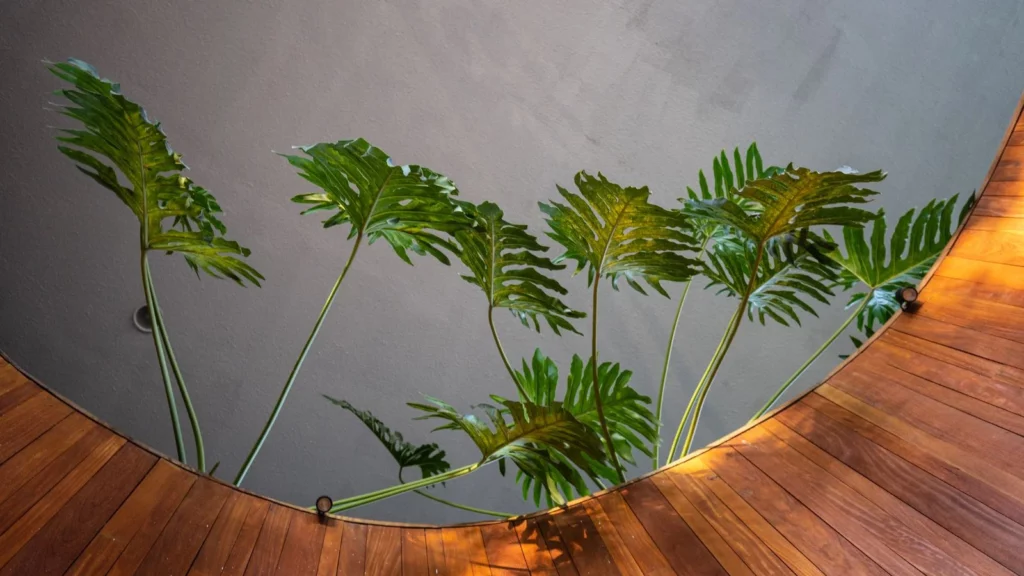How to improve wellbeing in care homes with biophilic design
Posted on 30 July 2024 By Michael Wood

In This Article
What steps can you take to improve wellbeing in care homes? Biophilic design, an approach that connects people with nature…
What steps can you take to improve wellbeing in care homes?
Biophilic design, an approach that connects people with nature in the built environment, has gained significant attention for its positive impact on wellbeing. In any healthcare environment, the health and happiness of residents and staff are paramount, and by embracing biophilic design principles, it can yield transformative benefits.
Scroll down to explore three ways in which biophilic design can enhance physical and mental health for residents and staff in a care home setting.
1) Reducing Stress
Did you know that by having more access to natural light throughout the day, it helps regulate your circadian rhythm?
These are 24-hour cycles that are part of your body’s internal clock, running in the background to coordinate mental and physical systems.
By increasing exposure to natural light, it helps reinforce the strongest circadian cue, assisting residents in distinguishing between day and night, leading to improved sleep quality and daytime alertness.

Care homes can facilitate this by including large windows, skylights and even lightwells. For those organisations that have building limitations to bring in natural light, they can opt for integrating lighting systems that mimic the dynamic qualities of natural light. Not only can this emulate the intensity and colour temperature of sunlight, it can help deliver a gradual differentiation between daytime and evening. This will help signalling to the body to be awake or prepare for rest accordingly, which is essential for reducing stress.
Another point to note is that by having a greater access to nature, it may help reduce your heart rate and lower your blood pressure, which correlates with lower stress. According to the 2014 Longitudinal Study published in Environmental Science & Technology, people who moved to a greener area from a more urban environment experienced a positive impact on their mental health.
However, those who moved from a greener area to a less-green area experienced adverse mental health effects post-move.
2) Facilitating Healing and Wellbeing In Care Homes
The use of biophilic design in healthcare facilities can have a huge benefit on cognitive function and boosting mental clarity. Using natural light sources and providing views of nature has been shown in studies to improve focus, attention, and overall cognitive performance.

For instance, a 1984 study published in Science found that patients provided with a view of nature from their windows recovered more quickly from surgery. They also took less pain relievers than those who did not have a view.
Including biophilic design into your care home facility can also bring physical benefit, encouraging physical activity and promotes an active lifestyle. Designing care homes with access to outdoor spaces, such as gardens or courtyards, offers opportunities for residents and staff to engage in physical exercise, walks, or relaxation amidst nature.
Exposure to sunlight also aids in the synthesis of Vitamin D, supporting bone health and immune function.
You can learn more about the benefits of biophilic design by reading this blog.
3) Improving Job Satisfaction and Staff Retention
For any member of staff, you want to work in an environment that is warm, comfortable and provides facilities that make your job easier. In the case of a care home, this is even more essential, with staff working long, unsociable hours.
By having a work environment your staff enjoy working in, they are much more likely to want to stay in their role, as well as being more productive during work hours. As we have seen, making subtle changes to the design of an environment can make a huge difference to wellbeing in care homes.

For instance, according to research by Cornell University Professor Dr. Alan Hedge, optimisation of natural light in a work environment significantly improves health and wellness among workers. In fact, this study showed that workers in daylight office environments reported a 51% drop in the incidence of eyestrain, a 63% drop in the incidence of headaches and a 56% reduction in drowsiness.
Whether it is maximising exposure to natural light with skylights or including features like water fountains to create peaceful sounds, you can help reduce staff stress levels and increase job satisfaction by incorporating natural elements into your care environment.
Summary
Incorporating biophilic design principles in care homes can bring about a multitude of benefits, ranging from reduced stress and improved mood to enhanced cognitive function and physical well-being.
By creating spaces that connect residents and staff with nature, wellbeing in care homes improve through a nurturing environment, contributing to a higher quality of life for all. Embracing biophilic design is not only a thoughtful approach but also an investment in the holistic well-being of residents and staff in care home settings.
If you would like more information and advice on interior design, book a free consultation with one of our advisors using the form below.
Speak to The Experts
Need assistance with product enquiries, general inquiries, or product support? Our Phonelines are open 9am - 5pm Monday to Friday
0113 519 0319
Or, fill out the form for a call back.
